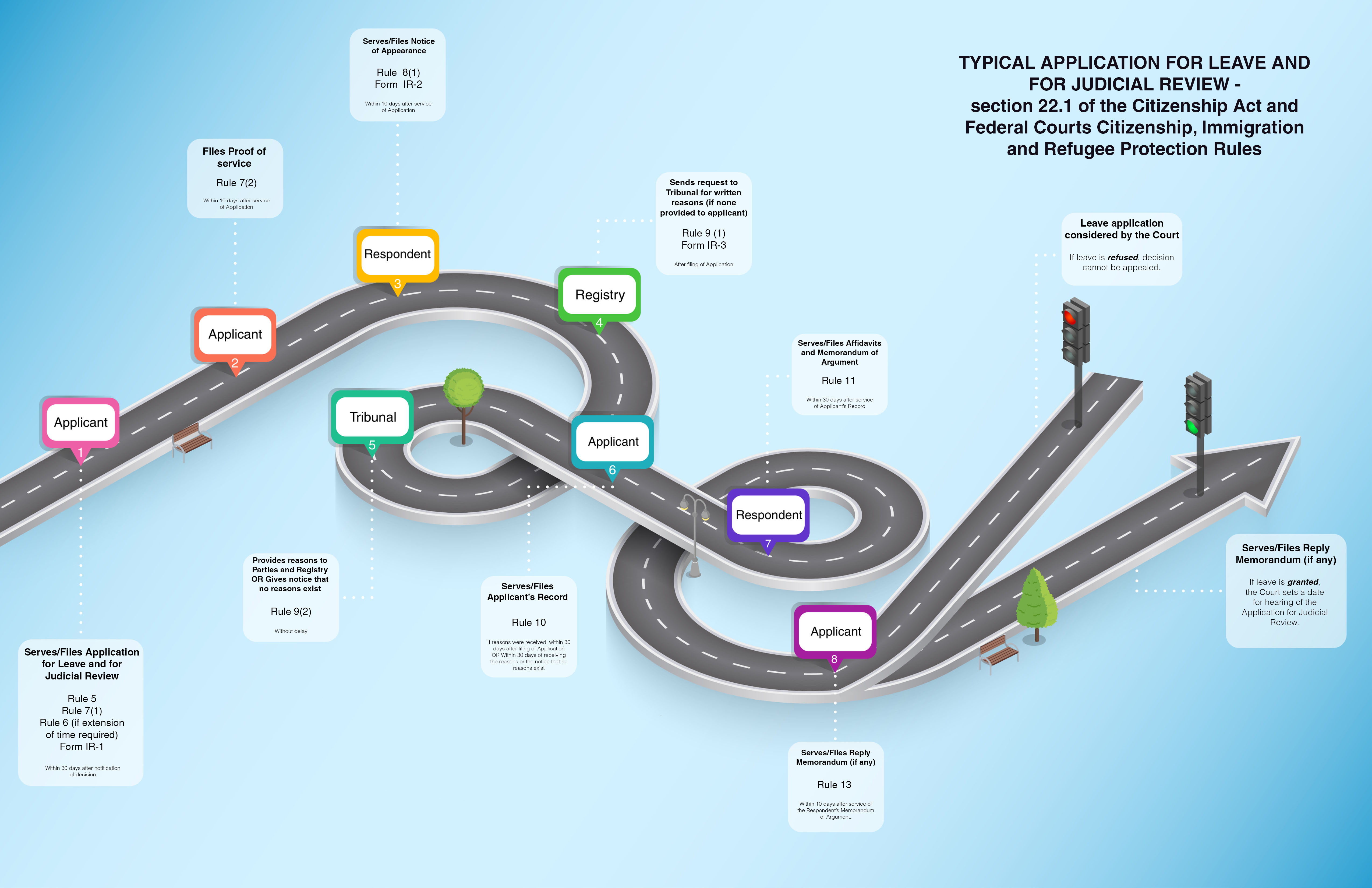Before initiating the mandamus process, it’s important to understand that Federal Court procedures—including mandamus applications—are strictly governed by the Federal Courts Rules. These rules outline the structure, format, and strict deadlines for every step of the judicial review process. Compliance is mandatory. A simple mistake in timing, form, or service could lead to delays or dismissal of the case.
Let’s take a step back and look at the full path your mandamus application will follow. The Federal Court has published a helpful procedural roadmap for judicial review applications related to citizenship—which also applies in mandamus situations when IRCC fails to act.

Here’s a simplified explanation of the full process step-by-step:
1. Applicant Files and Serves the Application for Leave and for Judicial Review: This is the official start of your case. You initiate a mandamus proceeding in Federal Court (FC) by fill your ALJR and serving it electronically to the FC.
2. Applicant Serves Proof of Service: Once the application is served to the FC, you file an Affidavit of Service to confirm that the documents were properly delivered. But we will skip this step because the Rule 9 kicks in automatically after a few weeks and the Court sends a notice to IRCC asking whether a decision has been made.
3. Respondent Serves a Notice of Appearance: Within 10 days of service, the DOJ must submit a Notice of Appearance, indicating they will participate in the proceedings to defend IRCC.
4. Registry Requests Written Reasons from the Tribunal: After receiving the Notice of Appearance, the Court applies Federal Court Rule 9, requesting IRCC to explain why no decision has been made.
5. Tribunal Provides a “No Decision Letter”: In response to Rule 9, IRCC submits a letter through DOJ stating that no decision has been made yet, and explaining their position.
6. Applicant Files and Serves the Applicant’s Record: Within 75 days of receiving the “Decision and Reasons Letter,” the applicant must file the Applicant’s Record, including legal arguments, evidence, and supporting documents.
7. Respondent Files and Serves the Memorandum of Argument: The DOJ responds with its Memorandum of Argument, stating why IRCC believes there is no unreasonable delay or legal obligation breached.
8. Applicant Serves the Reply Memorandum: The applicant may submit a Reply Memorandum within 10 days to respond to the DOJ’s arguments.
9. Federal Court Grants or Rejects Leave to Proceed: The judge reviews all submissions and decides whether the case has sufficient merit to proceed to a full hearing. If granted, it moves to the judicial review hearing stage.
Now, if you’re feeling overwhelmed by the legal terms or unsure about how the process works, that’s totally normal — this isn’t something most people deal with every day. The good news is: you don’t need to understand everything right away. I write a guide “How to File a Mandamus for Delayed Citizenship Application: A Step-by-Step Guide“, I walked through each step of the mandamus process in clear, simple terms, using real examples, practical advice, and links when needed. By the end of this guide, you’ll not only understand how it all works — you’ll also feel confident taking action if you decide to move forward.
